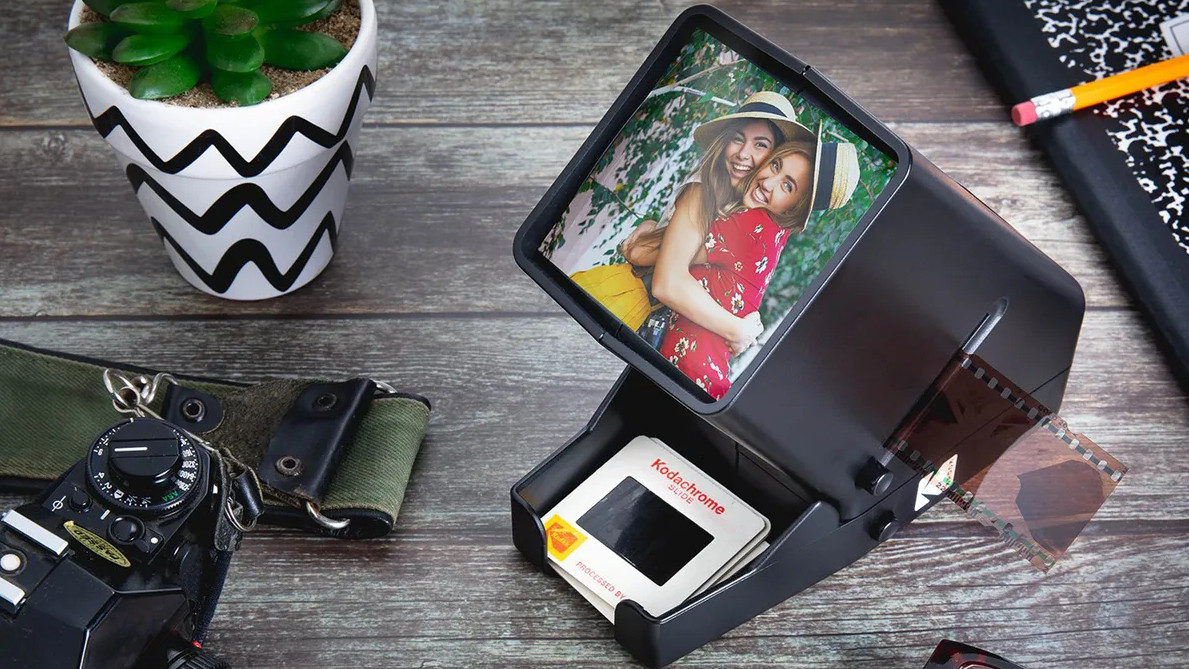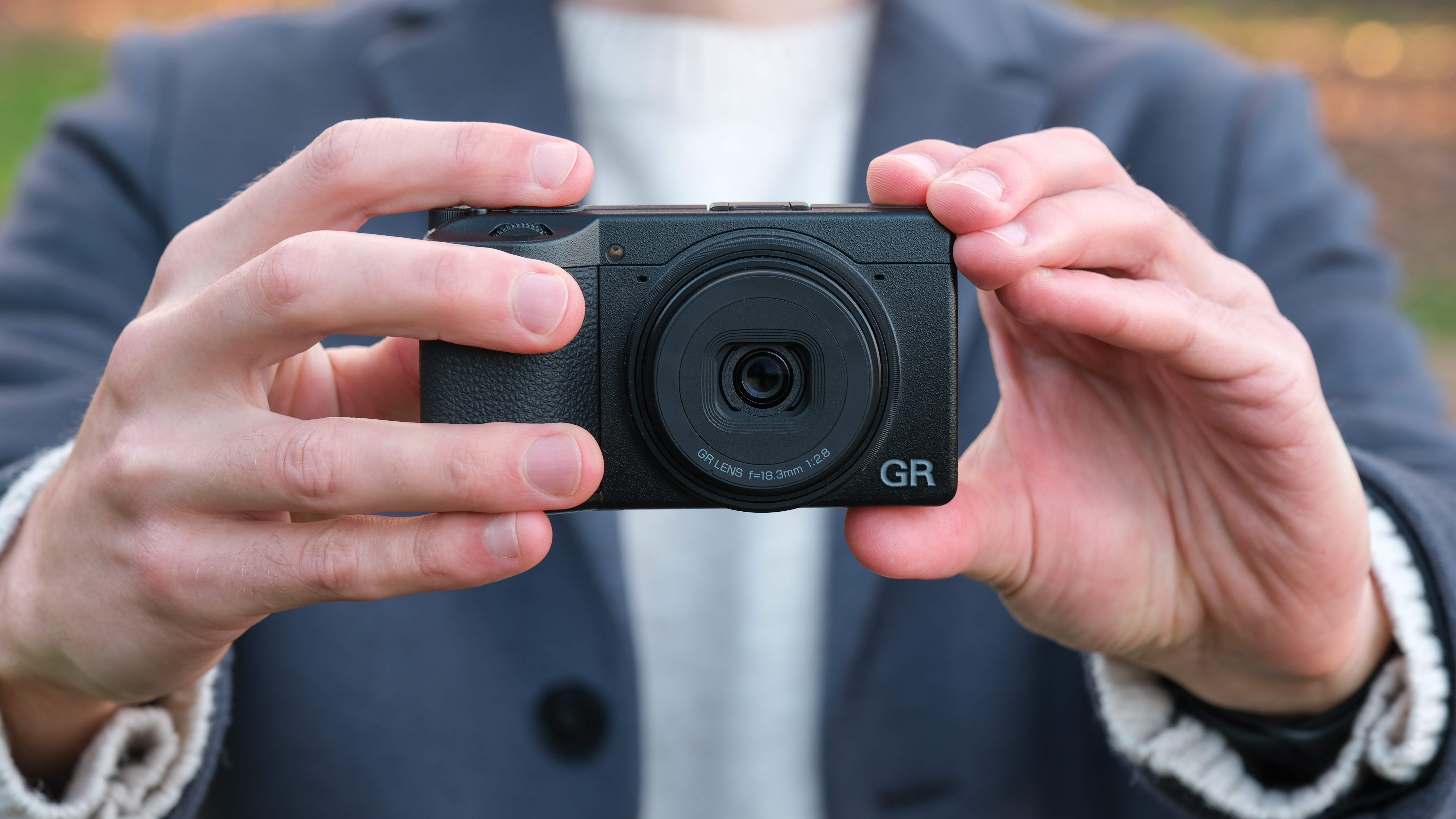The best slide viewers in 2025: the easy way to rediscover your old slides
Whether you wish to view old pictures or are shooting on film afresh today, these are the best slide viewers

Slide viewers have come a long way from the bulky, awkward machines of decades past. Gone are the days of hauling out a heavy projector just to see your slides - today’s best slide viewers are compact, lightweight, and often battery-powered, making it easy to enjoy your film and transparencies without the hassle or the clutter.
Modern slide viewers go beyond simple backlit viewing. Some models now allow you to scan and digitise your slides using your smartphone or USB-connected devices. Power options vary, too - some run on disposable batteries, while others plug into the mains or charge via USB, giving you flexibility whether you're at home or on the go.
Whether you've unearthed a long-forgotten box of 35mm slides in the attic or recently started shooting film and want to see your results up close, a good viewer or projector is the ideal tool - and we’ve selected eight of the best currently available.
Of course, there are other ways to view your slides. Mains-powered lightboxes and handheld loupes offer more traditional alternatives, particularly if you’re just looking to inspect frames before scanning. And if digitising your archive is the goal, be sure to check out our guide to the best film scanners. But for now, here are our top picks for slide viewers - each with its own strengths to suit different needs.

Gavin has over 30 years’ experience of writing about photography and television. He is currently the editor of British Photographic Industry News, and previously served as editor of Which Digital Camera and deputy editor of Total Digital Photography. With his wealth of knowledge, Gavin is well placed to recognize great camera deals and recommend the best products in Digital Camera World’s buying guides.
The quick list

This simple and straightforward slide viewer carries the name of the most famous brand in film photography. It's simple to operate, with bright light and good magnification.

A slide viewer and digital scanner in one, this isn't the highest-quality option, but is an affordable and efficient way to digitize your slides, with a handy digital screen

Very tidy and portable, but still offering 3x magnification, the Kaiser Diascop Mini 3 is an ideal choice for anyone who wants something that won't take up space.

This simple lightbox provides a portable and effective way of viewing your slides, with a handy scanning option that works in conjunction with your smartphone.

While it's a pretty straightforward tabletop device, this slide viewer offers 4x magnification, and is compatible with both 35mm and 2x2-inch slides.

While it only offers 2x magnification, this simple slide viewer only needs a couple of AA batteries to run, and weighs a slender 196g, making it easy to transport.
Load the next products ↴

Best smartphone slide scanner
Want a quick way to digitise all those slides? The Kodak Mobile Film Scanner uses app integration to guide you through the process quickly and efficiently.
The best slide viewers
Why you can trust Digital Camera World
Best budget slide viewer
Specifications
Reasons to buy
Reasons to avoid
When you think of 35mm slide film, you think of Kodachrome – so it makes sense that there exists a Kodak branded slide viewer and negative viewer combined. This angled desktop device is both battery operated and features a daylight-aping backlit LED display, with a 3x magnifying glass provided so you can really pore over the details of your shots.
Operation is straightforward: whereas the slides are slid into the device top-down, a second slot at the side is provided for inserting strips of negative, complete with quick release button for when you’re ready to slide in the next strip. Unsurprisingly, the four AA batteries required to power the device, slotted into the base, are extra, as is a power cable should you want to plug it into the mains, but neither is a deal breaker at this price point.
Overall, this is a simple, practical and affordable device from the most recognizable name in old school film photography.
See our full Kodak 35mm Slide Viewer review
Best slide viewer with screen
Specifications
Reasons to buy
Reasons to avoid
Rather than a magnifier, this slide viewer features its own five-inch LCD screen, which lets you view, edit and scan film slides and negatives. It can also convert them into handy-to-share JPEG digital files, thanks to 14MP sensor.
While not a professional-grade film scanner by any means, if operated as a standalone device, either 14MP or interpolated 22MP files can be saved directly to SD card (though you’ll need to provide your own card). More usefully, a USB cable for connection to your computer and HMDI cable for hooking it up to a TV set are provided out of the box, as are adapters for differing film formats, including 35mm, 126 and even 110 film, plus a cleaning brush to avoid dust intruding.
However, if you want to power the device via the mains rather than utilizing your computer’s USB port or USB-equipped power bank, you’ll have to shell out extra for a mains adapter as one isn’t included out of the box.
See our full Kodak Slide N Scan review
Best compact slide viewer
Specifications
Reasons to buy
Reasons to avoid
Kaiser is known for its broad range of photographic accessories, so it’s no surprise that it also offers options when it comes to 35mm slide viewing, including lightboxes. Like the inexpensive Kodak alternative, this compact viewer offers 3x magnification, is powered by a pair of optional yet essential AA batteries and, uniquely, features a fold out prop that allows for a more comfortable viewing angle when set down on a desktop.
The viewing area here is a compact, yet sufficiently large, 2x2-inches. Like the old school slide viewers people owned in the 1970s or 80s, the bulb in this device is activated by inserting a 35mm slide in the available top slot, and simply pressing down on it. There’s not much to this device and equally little it seems that can go wrong. An easy to use and affordable solution then; all you have to do is stump up extra for the batteries required.
See our full Kaiser Diascop Mini 3 review
Best lightbox slide viewer
Specifications
Reasons to buy
Reasons to avoid
A lightbox is a traditional way that professionals used to review their slides and negatives. And this slimline version offers an acrylic panel and LED light source for slide and negative viewing. It also acts as a portable scanner, in conjunction with your smartphone and SlideScan or FilmBox apps. In short, you're getting practicality, portability and value for money in spades, as long as you’re not expecting professional grade results.
Strips of film and slides can be placed side by side or in rows on the device to be viewed or ‘scanned’ simultaneously. Although there is an option for mains power, portability is offered by the fact that six optional AAAs can also be inserted, though this of course adds to the weight.
The viewing area is again a very compact 5x4-inches, but on the plus side this has allowed for the set up to stay very portable and lightweight. The lamp life of the LED is said to be a generous 10,000 hours, while a leather effect carry case is provided out of the box.
See our full Rybozen Ultra-Thin Portable Slide Viewer review
• See more options in our Best lightbox for photographers & artists guide.
Best simple slide viewer
5. Pana-vue 2x2 Slide Viewer
Specifications
Reasons to buy
Reasons to avoid
An incandescent light is at the heart of this boxy viewer designed for tabletop viewing that allows users to stack and view up to 36 slides, while claiming to offer easy push-pull operation. The square format view screen resembling a standard definition TV set of old goes slightly further than others here in offering 4x magnification, but enthusiast photographers wanting more in the way of detail may prefer a lightbox and a handheld magnifying glass or loupe instead.
It’s compatible with both 35mm and all 2x2-inch (5x5cm) slides, but is battery operated only, with no mains power lead provided out of the box. Like the majority of its rivals, the batteries required also need to be purchased as an optional extra.
Best handheld slide viewer
Specifications
Reasons to buy
Reasons to avoid
This Photolux branded ‘SV2’ handheld LED illuminated device, also alternatively known as the Zuma Z-SV2 in the States, is another option for viewing 35mm slides that is as simple as they come. Offering a so-so 2x magnification, it’s powered by two AA batteries. You slide your 35mm slide for viewing into a vacant slot at the top, which activates the built-in daylight white LED light source and… that’s essentially it.
Unusually, the 2x AA batteries required for the light are actually included here. Extremely lightweight at just 196g and compact too, with a viewing screen size of 5.5x4.5cm, this basic yet supremely portable viewer would be ideal for casually browsing slides when feet up on the sofa.
See our full Photolux SV-2 review
Best smartphone slide scanner
Specifications
Reasons to buy
Reasons to avoid
This is a low-tech, left-field solution for viewing your slides. This is a cardboard, collapsible device that is designed to help you digitize your transparencies and negatives using the camera on your smartphone. A free downloadable app helps you with the process.
For something that looks like a cardboard box, it seems a bit expensive; but more robust film scanners cost significantly more. It is not a quick way of viewing boxes of old slides mind. Sold under the Kodak brand in the US, but found as the PictoScanner in Europe.
See our full Kodak Mobile Film Scanner review
How to choose the best slide viewer
When choosing a slide viewer, it’s worth considering which features you actually need, as many modern models offer multifunctionality. Do you simply want a device to view your slides, or would you also like the ability to digitize them at the same time? Some slide viewers come with built-in scanning capabilities, while others are designed to make manual smartphone scanning easier. On the other hand, some models focus solely on viewing without any digital integration.
Since slides are quite small, magnification is an important factor. A good slide viewer will enlarge your images for easier viewing, but magnification levels vary between models. Generally, higher-end viewers offer greater magnification, which can make a noticeable difference in clarity and detail.
Most slide viewers include an integrated light source and require power to function. Many run on standard batteries—typically AAA, AA, or C—but these are rarely included (because, of course, they never are!). Be sure to check what type of batteries your chosen viewer requires and stock up accordingly. Alternatively, some models can be powered via USB-C or micro USB, which is a convenient option if you’d rather avoid dealing with disposable batteries.
How we test slide viewers
When we test slide viewers, naturally the first thing to do is take a set of slides, load them in and see how they look. We assess the magnification level of the slide viewer and how easy it is to set up, and over a longer time we try to get a feel for how long the batteries last. If a slide viewer also offers additional functionality such as digital scanning, we put this through its paces too, and rate the quality of scans received as well as the ease and practicality of the process. You can read more about how we test and review photographic accessories at Digital Camera World.
Read more
Best film scanners
Best scanner for documents and photographs
Best VHS to DVD converters
Best film cameras
Best 35mm film
Best video projectors
Best projection screens
The best camera deals, reviews, product advice, and unmissable photography news, direct to your inbox!
Gavin has over 30 years’ experience of writing about photography and television. He is currently the editor of British Photographic Industry News, and previously served as editor of Which Digital Camera and deputy editor of Total Digital Photography.
He has also written for a wide range of publications including T3, BBC Focus, Empire, NME, Radio Times, MacWorld, Computer Active, What Digital Camera and the Rough Guide books.
With his wealth of knowledge, Gavin is well placed to recognize great camera deals and recommend the best products in Digital Camera World’s buying guides. He also writes on a number of specialist subjects including binoculars and monoculars, spotting scopes, microscopes, trail cameras, action cameras, body cameras, filters and cameras straps.







